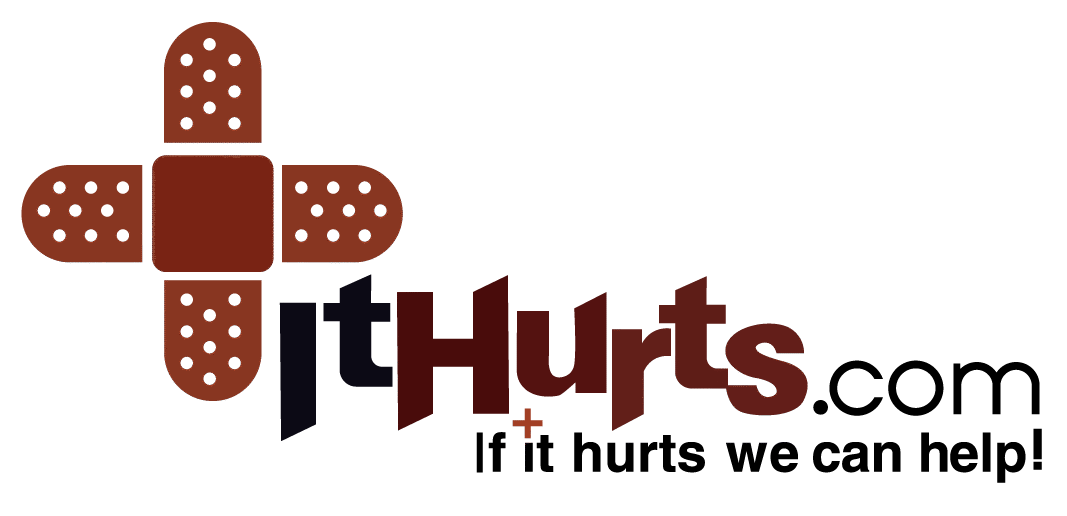Shopping Cart
CloseNo products in the cart.
Filter
closeMastering TMJ Pain: Understanding, Managing, and Preventing Temporomandibular Joint Disorder
Author: ItHurts.com
A Comprehensive Talk on Mastering TMJ Pain

Understanding the Basics:
Temporomandibular Joint Disorder (TMJ) can cause a cascade of discomfort, including jaw pain, headaches, and even neck tension. This disorder, which affects the joints and muscles that control jaw movement, is often overlooked despite its impact on daily life. Understanding the root causes, symptoms, and effective treatment options is crucial for managing and preventing this condition.
This comprehensive guide explores the characteristics of TMJ pain, underlying physiological reasons, effective treatments, and prevention strategies to help you take control of your health.
Description of TMJ Pain
TMJ pain manifests in various ways, depending on the severity and underlying cause. Common characteristics include:
- Jaw Pain: A dull ache or sharp pain localized in the jaw joint or surrounding muscles.
- Headaches: Often radiating from the temples or mimicking tension headaches.
- Facial Pain: Sensation of tightness or discomfort spreading across the cheeks.
- Ear Pain: A frequent symptom due to the proximity of the jaw joint to the ear, often mistaken for an ear infection.
- Neck and Shoulder Pain: Secondary tension caused by jaw misalignment or clenching.
- Clicking or Popping Sounds: Audible sounds when opening or closing the mouth, sometimes accompanied by discomfort.
Pain intensity varies, from mild discomfort during chewing to severe, debilitating pain affecting daily activities.
Causes of TMJ Pain
Several factors can contribute to the development of TMJ pain:
- Bruxism: Habitual teeth grinding or jaw clenching, often related to stress.
- Injury: Trauma to the jaw, head, or neck can disrupt normal joint function.
- Arthritis: Osteoarthritis or rheumatoid arthritis can damage the temporomandibular joint.
- Poor Posture: Forward head posture strains jaw muscles and ligaments.
- Stress: Emotional tension often leads to muscle tightness and clenching.
- Dental Issues: Misaligned teeth or an uneven bite may contribute to jaw misalignment.
- Genetics: Family history of joint disorders can predispose individuals to TMJ issues.
Underlying Reasons for TMJ Pain
TMJ pain stems from complex physiological and anatomical factors:
- Muscle Strain: Overworked or fatigued jaw muscles from clenching or chewing.
- Nerve Compression: The proximity of the trigeminal nerve to the temporomandibular joint means inflammation can irritate this nerve, causing pain.
- Disc Displacement: The articular disc cushioning the joint may become displaced, leading to clicking sounds and restricted movement.
- Inflammation: Chronic inflammation from arthritis or repetitive strain can exacerbate pain and restrict mobility.
Presentation of TMJ Pain
TMJ pain often presents with the following symptoms:
- Localized Jaw Pain: Tenderness near the ears or jawline.
- Difficulty Chewing: Pain or discomfort when biting down.
- Limited Jaw Movement: Trouble opening the mouth wide or feeling “locked” in position.
- Auditory Symptoms: Clicking or popping sounds when moving the jaw.
- Referred Pain: Headaches, neck stiffness, or even shoulder pain.
These symptoms can fluctuate, with periods of heightened discomfort triggered by stress or overuse.
Treatment and Relief for TMJ Pain
Self-Care Techniques
- Jaw Exercises:
- Chin Tucks: Gently pull your chin inward, creating a “double chin” effect, to stretch and relax neck and jaw muscles.
- Controlled Mouth Opening: Open your mouth slowly while keeping the tongue on the roof to stabilize movement.
- Self-Massage:
- Apply gentle pressure to the jaw and temple areas using circular motions.
- Target trigger points around the neck and shoulders for holistic relief.
- Stretching:
- Perform side-to-side neck stretches to reduce muscle tension.
- Use resistance exercises to strengthen jaw muscles.
Lifestyle Adjustments
- Apply Heat or Cold: Alternate between warm compresses for muscle relaxation and cold packs to reduce inflammation.
- Dietary Changes: Stick to soft foods and avoid chewing gum to reduce strain on the jaw.
- Relaxation Techniques: Practice deep breathing, yoga, or meditation to manage stress.
Medical Treatments
- Physical Therapy: Guided exercises to strengthen and relax jaw muscles.
- Medications: Over-the-counter pain relievers, muscle relaxants, or anti-inflammatory drugs as needed.
- Dental Interventions: Bite guards or orthodontics to correct alignment issues.
- Surgical Options: For severe cases, surgical intervention may be necessary to repair or replace the joint.
Scientific Research on TMJ Pain
Research underscores the multifactorial nature of TMJ pain. Key studies include:
- A 2021 study in the Journal of Oral Rehabilitation highlighted the effectiveness of jaw exercises in reducing pain and improving function for TMJ patients.
- A 2019 meta-analysis in Pain Medicine found that stress management techniques significantly reduced bruxism-related TMJ symptoms.
- Research in Arthritis Research & Therapy (2020) identified the role of inflammatory cytokines in TMJ arthritis, paving the way for targeted treatments.
Actionable Steps for Preventing TMJ Pain
Posture Management
- Maintain a neutral spine position when sitting or standing.
- Use ergonomic chairs with head and lumbar support.
- Adjust computer monitors to eye level to avoid forward head posture.
Stress Reduction
- Incorporate mindfulness techniques to reduce stress-induced clenching.
- Practice progressive muscle relaxation (PMR) to alleviate tension.
Oral Habits
- Avoid chewing gum or hard foods.
- Refrain from resting your chin on your hand, which can strain the jaw.
Nighttime Protection
- Use a custom-fitted night guard to prevent teeth grinding.
- Ensure your sleeping position supports neck alignment.
Regular Exercise
- Incorporate neck and jaw exercises into your routine.
- Engage in activities like swimming or yoga to promote overall flexibility and strength.

Final Thoughts:
TMJ pain is a complex condition influenced by physical, emotional, and lifestyle factors. Understanding its causes and presentation empowers individuals to seek timely treatment and make lifestyle changes to prevent recurrence. Key takeaways include:
- TMJ pain often results from muscle strain, inflammation, or misalignment.
- Self-care techniques such as jaw exercises, stress management, and dietary adjustments can significantly alleviate symptoms.
- Preventative measures, including posture correction and regular exercise, are essential for long-term relief.
Proactively addressing TMJ pain through education, intervention, and prevention is critical for maintaining your overall well-being. Begin implementing these strategies today to reclaim a pain-free life.
Disclaimer: This article is for informational purposes only and should not replace professional medical advice. Always consult a healthcare provider for a personalized treatment plan.
Footnotes
- Journal of Oral Rehabilitation (2021). [Link to study].
- Pain Medicine (2019). [Link to study].
- Arthritis Research & Therapy (2020). [Link to study].
ItHurts.com is your ally in your endeavor to live pain-free. We offer guidance, resources, and community support to address chronic pain, emotional stress, and physical discomfort. Discover insightful articles, product reviews, recommendations and shared experiences to empower your journey to better health. Remember, if it hurts, we can help!
Related Products
No posts found!
Related Blogs
No posts found!
